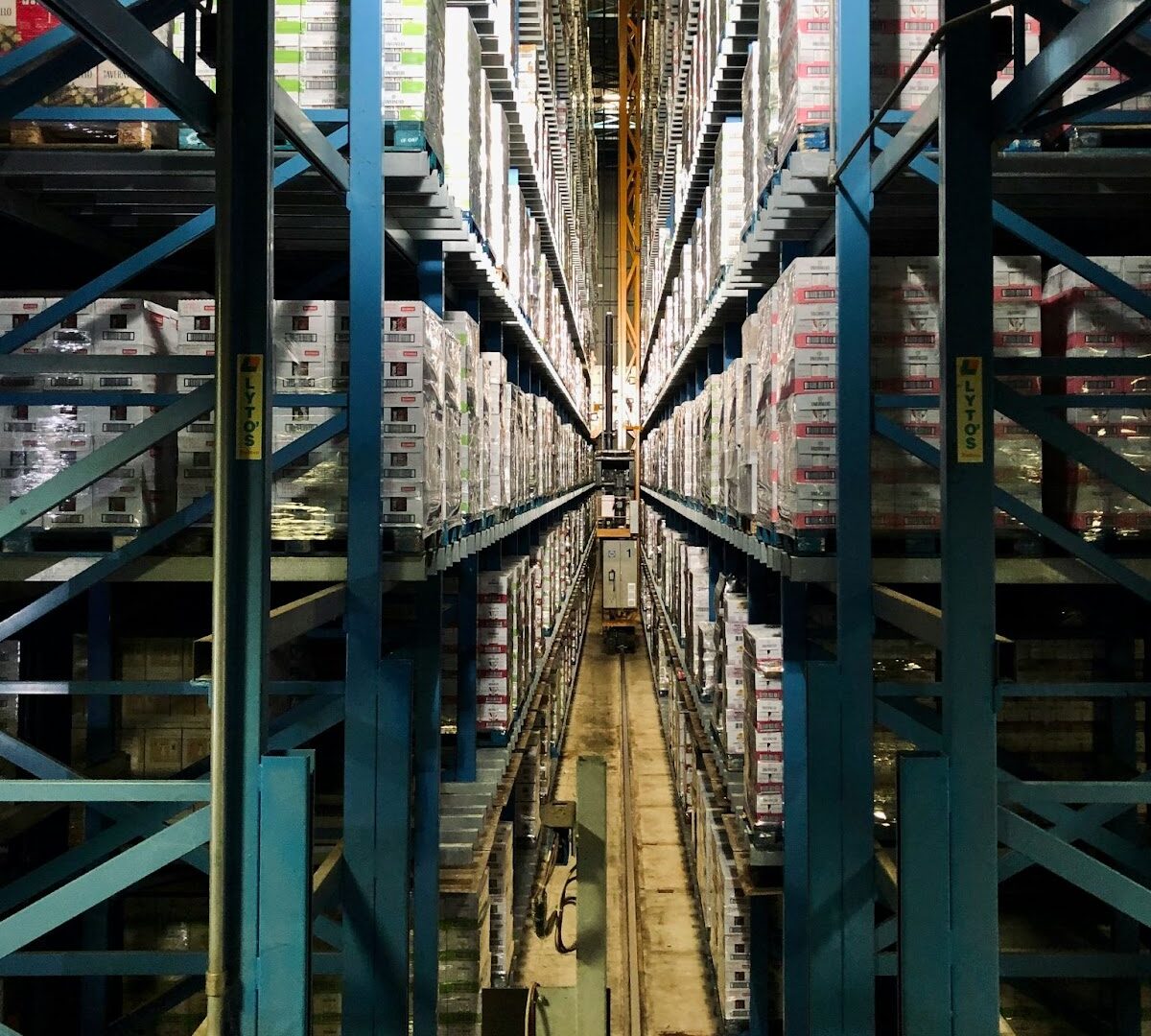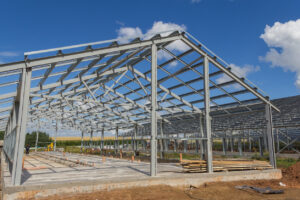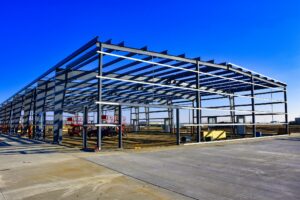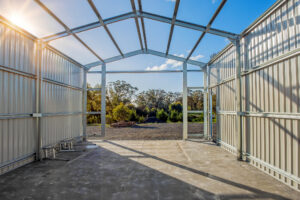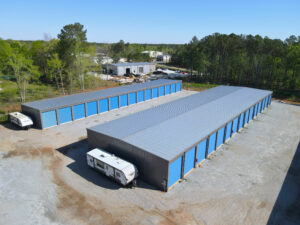Efficiency is a crucial aspect of warehouse operations, as it directly impacts the overall supply chain management. To optimize warehouse efficiency, it is important to understand the role of warehouse planning and design in supply chain management and the consequences of inefficient warehouse operations.
By identifying the key elements of a strategic warehouse plan and following a structured approach to its implementation, businesses can significantly improve their warehouse operations.
This article explores the steps involved in creating and implementing a strategic warehouse plan and provides insights into measuring its success.
Table of Contents:
- Understanding the Importance of Warehouse Efficiency
- Key Elements of a Strategic Warehouse Plan
- Steps to Create an Effective Warehouse Plan
- Implementing the Strategic Warehouse Plan
- Measuring the Success of Your Warehouse Plan
- Conclusion
Understanding the Importance of Warehouse Efficiency
Warehousing plays a vital role in supply chain management, serving as the central hub where products are received, stored, and dispatched. Efficient warehouse operations ensure timely deliveries, cost savings, and customer satisfaction.
On the other hand, inefficient operations can lead to delayed order fulfillment, increased costs, and customer dissatisfaction.
One key aspect of warehouse efficiency is the use of technology. Modern warehouses are increasingly adopting automation and robotics to streamline processes such as picking, packing, and inventory management. Automated systems can significantly reduce human error, improve order accuracy, and increase the speed of operations. Additionally, technologies like RFID (Radio-Frequency Identification) and WMS (Warehouse Management Systems) play a crucial role in tracking inventory levels, optimizing storage space, and enhancing overall operational efficiency.
The Role of Warehousing in Supply Chain Management
Warehouses are the heart of the supply chain, providing storage and distribution solutions for manufacturers, wholesalers, and retailers. They facilitate the smooth flow of goods from suppliers to customers, playing a crucial role in inventory management, order fulfillment, and transportation coordination.
With effective warehouse management, businesses can enhance their overall supply chain performance, reduce stockouts, and meet customer demands efficiently.
Moreover, warehouses also serve as strategic points for value-added services such as kitting, labeling, and quality control.
By offering these services within the warehouse premises, companies can reduce lead times, improve product customization, and provide added value to customers.
This integration of additional services not only enhances operational efficiency but also strengthens customer relationships and competitive advantage in the market.
The Impact of Inefficient Warehouse Operations
Inefficient warehouse operations can have far-reaching consequences that negatively affect the entire supply chain. Excessive carrying costs, long lead times, inaccurate inventory, and inefficient handling can result in increased costs and reduced customer satisfaction.
Did You Know?
Inefficient warehouse operations cause UK warehouses to lose nearly 3,000 hours every year, especially when it comes to inventory control, packing, unloading, and picking.
Furthermore, poor warehouse layout design and lack of space utilization can lead to operational bottlenecks, lower productivity, and increased risk of errors and accidents.
Another critical aspect of inefficient warehouse operations is the impact on sustainability. Inefficient use of space, energy, and resources not only adds to operational costs but also contributes to environmental degradation.
By optimizing warehouse processes, implementing green initiatives, and adopting sustainable practices, companies can reduce their carbon footprint, minimize waste, and contribute to a more environmentally friendly supply chain ecosystem.
Key Elements of a Strategic Warehouse Plan
A well-defined strategic warehouse plan and design is essential for maximizing efficiency and ensuring smooth operations. It encompasses various key elements that need to be considered:
Space Utilization and Layout Design
Effective space utilization is crucial for optimizing warehouse operations. Analyzing the existing layout and reorganizing the storage space can lead to improved efficiency. Utilizing vertical space, implementing a logical product placement strategy, and optimizing aisle widths can help maximize storage capacity and streamline order picking.
Furthermore, considering factors such as SKU velocity and seasonality can also influence the warehouse layout design.
High-moving items should be placed closer to the shipping area for faster access, while seasonal items can be stored in a way that minimizes interference with daily operations.
Inventory Management Strategies
Implementing robust inventory management strategies is vital for maintaining accurate stock levels and minimizing carrying costs. By conducting regular stock audits, adopting barcoding or RFID systems, and implementing proper stock rotation techniques, businesses can enhance inventory accuracy and ensure timely order fulfillment.
In addition to these strategies, implementing a vendor-managed inventory (VMI) system can further streamline operations by allowing suppliers to monitor and replenish stock levels directly.
This collaborative approach can reduce stockouts and improve overall inventory management efficiency.
Technology Integration for Warehouse Operations
Incorporating technology into warehouse operations can significantly improve efficiency and accuracy. Automated systems for inventory tracking, order processing, and warehouse management can streamline processes, reduce human errors, and provide real-time visibility into stock levels and order statuses. Integration with transportation management systems can also optimize the entire supply chain.
Moreover, leveraging data analytics and artificial intelligence can provide valuable insights for demand forecasting, inventory optimization, and operational decision-making.
By harnessing the power of technology, warehouses can adapt to changing market demands and stay competitive in the industry.
Did You Know?
It is projected that by 2027, more than a quarter (26%) of warehouses will have implemented some form of automation, a significant increase from the 14% automation rate just a decade earlier.
Steps to Create an Effective Warehouse Plan
Developing a strategic warehouse plan requires a systematic approach to ensure its effectiveness. The following steps can help businesses create an effective plan:
Conducting a Warehouse Efficiency Audit
Begin by conducting a comprehensive audit of the current warehouse operations. Evaluate the existing layout, storage systems, material handling equipment, and workflow processes. Identify bottlenecks, areas of improvement, and potential risks. This audit will serve as the foundation for developing an action plan.
During the audit process, it is crucial to involve key stakeholders from various departments such as operations, logistics, and inventory management.
Their insights and perspectives can provide a holistic view of the warehouse operations and help in identifying areas that need improvement.
Additionally, utilizing data analytics and warehouse management software can offer valuable insights into performance metrics and trends.
Setting Goals for Warehouse Efficiency
Once the audit is complete, set specific goals and targets for improving warehouse efficiency. These goals should be aligned with the overall business objectives and consider factors such as order fulfillment time, inventory accuracy, and cost reduction. Clearly defined goals provide a clear direction for the plan and help measure its success.
It is essential to ensure that the goals set are SMART—specific, measurable, achievable, relevant, and time-bound. This approach will enable the warehouse management team to track progress effectively and make adjustments as needed to stay on course toward achieving the desired outcomes.
Developing a Plan of Action
Based on the audit findings and set goals, develop a detailed plan of action. This plan should outline specific strategies, timelines, resource requirements, and responsibilities for implementing the warehouse improvements.
It should address areas such as layout redesign, technology adoption, process optimization, staff training, and performance monitoring. Collaboration among cross-functional teams is key to successfully implementing the action plan.
By involving employees from different departments in the planning process, businesses can leverage diverse expertise and ensure that the proposed changes are feasible and beneficial across the board.
Regular communication and feedback mechanisms should be established to keep all stakeholders informed and engaged throughout the implementation phase.
Pro tip:
In warehouse planning, prioritize flexibility and adaptability. Design your warehouse layout with movable storage solutions and adaptable infrastructure to accommodate changing inventory levels, new product lines, and evolving operational needs. This will allow you to optimize space utilization, improve efficiency, and easily adapt to future growth.
Implementing the Strategic Warehouse Plan
Implementing the strategic warehouse plan requires effective execution and coordination. The following steps are crucial for successful implementation:
When it comes to implementing a strategic warehouse plan, it is important to consider the physical layout of the warehouse itself. Ensuring that the warehouse is organized logically and efficiently can greatly impact the success of the plan. This includes optimizing storage space, creating efficient picking routes, and implementing clear labeling systems for easy navigation.
Training Staff for New Procedures
Introduce employees to the new procedures and technologies and provide them with adequate training. Ensure that they understand the benefits and objectives of the plan, as well as their roles and responsibilities.
Regular training sessions and ongoing support will help them adapt to the changes smoothly.
Furthermore, fostering a culture of continuous learning within the warehouse staff can lead to long-term success. Encouraging employees to seek out new skills and knowledge can result in a more adaptable and innovative workforce, better equipped to handle the evolving demands of the warehouse environment.
Monitoring and Adjusting the Plan
Continuous monitoring of warehouse operations is essential to ensure that the implemented plan is delivering the desired results. Regularly track key performance indicators (KPIs) such as order accuracy, on-time delivery, and inventory turnover.
Analyze the data and make necessary adjustments to the plan, addressing any bottlenecks or issues that arise.
In addition to monitoring KPIs, it is also beneficial to gather feedback from warehouse staff who are directly involved in the day-to-day operations. Their insights and observations can provide valuable information for refining the strategic warehouse plan and making it more effective in the long run.
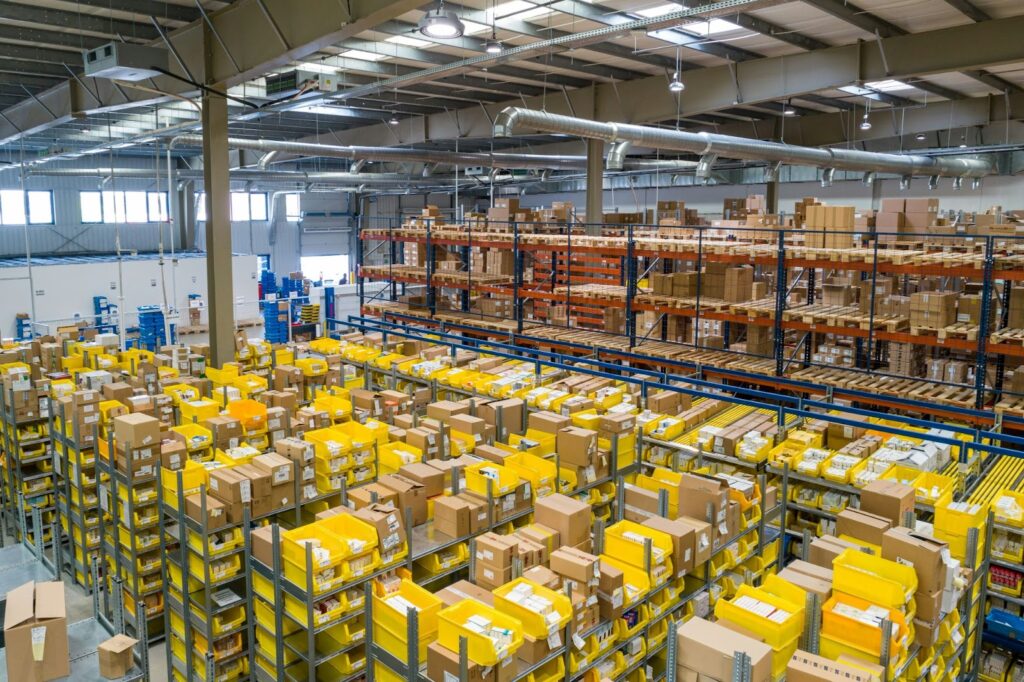
Measuring the Success of Your Warehouse Plan
Measuring the success of the strategic warehouse plan is crucial for assessing its effectiveness and identifying areas for further improvement. The following approaches can help measure and evaluate warehouse efficiency:
Key Performance Indicators for Warehouse Efficiency
Identify and track key performance indicators that align with the warehouse plan’s goals. These KPIs may include order fulfillment time, inventory accuracy, picking efficiency, order cycle time, and customer satisfaction. Regularly analyze the KPI data to evaluate the plan’s impact and make data-driven decisions for further optimization.
Order fulfillment time is a critical KPI that indicates how quickly customer orders are processed and shipped. By monitoring this metric, warehouse managers can identify bottlenecks in the order fulfillment process and implement strategies to improve efficiency. This could involve streamlining picking and packing processes, optimizing inventory layout, or investing in automation technology.
Inventory accuracy is another important KPI that measures the precision of inventory records compared to the actual stock in the warehouse. Maintaining accurate inventory records is essential for avoiding stockouts, preventing overstocking, and ensuring smooth order fulfillment.
Regular cycle counts, barcode scanning systems, and real-time inventory tracking software can help improve inventory accuracy and minimize discrepancies.
Pro tip:
The optimal percentage for warehouse storage utilization usually falls between 22% and 27% of the total storage capacity. This range is considered ideal as it facilitates efficient movement and operations within the warehouse, including loading, unloading, and picking, without causing congestion or disrupting workflow.
Regular Review and Continuous Improvement
Regularly reviewing the warehouse plan and its outcomes is essential for identifying areas for continuous improvement. Soliciting feedback from employees, customers, and suppliers can provide valuable insights and ideas for enhancing warehouse operations.
By fostering a culture of continuous improvement, organizations can encourage employees to actively contribute to identifying inefficiencies and implementing innovative solutions.
One way to promote continuous improvement is through regular brainstorming sessions or Kaizen events, where cross-functional teams collaborate to identify and address operational challenges.
These events can lead to process optimizations, layout redesigns, and the implementation of new technologies that enhance warehouse efficiency.
Furthermore, organizations can leverage technology to drive continuous improvement. Warehouse management systems (WMS) with advanced analytics capabilities can provide real-time visibility into key operational metrics, enabling proactive decision-making. By leveraging data-driven insights, warehouse managers can identify trends, patterns, and areas of improvement, leading to enhanced efficiency and cost savings.
By implementing a culture of continuous improvement, organizations can ensure the long-term success of their warehouse operations. This approach fosters a mindset of adaptability and agility, allowing businesses to stay ahead of market demands and maintain a competitive edge.
Conclusion
Creating and implementing a strategic warehouse plan and design is a vital step toward achieving efficiency in warehouse operations.
Understanding the importance of warehouse efficiency, considering key elements of a strategic plan, following a structured approach to design, creation, and implementation, and measuring success through performance indicators, can help businesses optimize their warehouse operations and strengthen their overall supply chain management.
For over 23 years, SteelCo has offered commercial design-build services in Georgia and managed warehouse projects totaling over 200,000 square feet. Our committed team supports clients through every stage of the construction process, from shipping steel building materials nationwide to providing conceptual designs, layouts, and stamped engineering plans to secure building permits and licenses.
———————-
Check out these related articles:
> Starting A Warehouse Business: Key Considerations
> Exploring Different Warehouse Types

